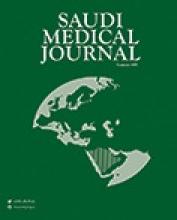Abstract
OBJECTIVE: In this study, we applied immuno- histochemical techniques on the functionally little known organ of Chievitz (juxtaoral organ [JOO]) in dogs to determine its origin and possible function.
METHODS: The term abortive materials of 6 Doberman dogs were used for experimental procedures in July 2002 to June 2003 at Gazi University Faculty of Medicine, Ankara, Turkey, after routine light microscopic tissue preparation, the sections were stained with Masson's trichrome stain. In order to elucidate the function-related origin of the organ, we used epidermal growth factor (EGF-r), transforming growth factor (TGF-alpha) and nerve growth factor (NGF-beta) immunohistochemical stains.
RESULTS: We observed a very strong and widespread immunoreactivity of EGF-r and TGF-alpha on simple squamous capsular cells. We detected nerve growth factor-beta positivity in granular form both in simple squamous capsular cells and in neighboring connective tissue. However, we did not detect EGF-r reactivity on parenchymal cells except a weak immunoreactivity on central ones. We noticed transforming growth factor-alpha in most of the parenchymal cells while we observed NGF-beta strongly in all the parenchymal cells.
CONCLUSION: These results may point out that the JOO may be of mesothelial or epithelial origin. Having NGF-alpha positive granules and close relationship with blood vessels may imply a neurosecretory function. We believe that our study may add new perspectives to the function of the JOO.
- Copyright: © Saudi Medical Journal
This is an open-access article distributed under the terms of the Creative Commons Attribution-Noncommercial-Share Alike 3.0 Unported, which permits unrestricted use, distribution, and reproduction in any medium, provided the original work is properly cited.






